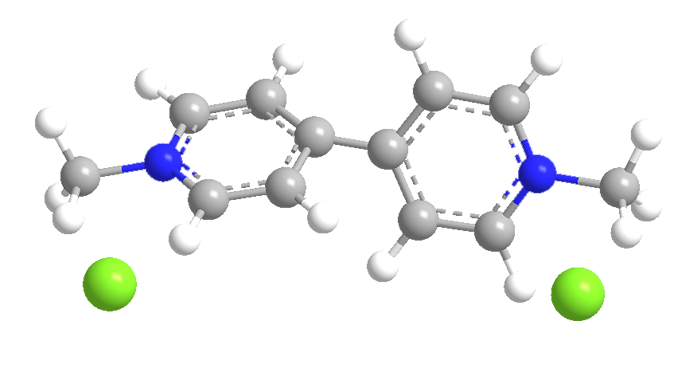

Paraquat (1,1′-dimethyl-4-4′-bipyridinium dichloride) is a nonselective contact herbicide. (The dication alone is also called paraquat; disubstituted 4-4′-bipyridinium salts are known as viologens.) Reports of the synthesis and properties of viologens date back to 1870, but paraquat was not recognized as an herbicide until 1955. Although it has been banned in some countries, it is one of the world’s most commonly used herbicides.
Paraquat is toxic and often fatal to mammals: It causes acute respiratory distress and ulceration of the digestive tract. Because of its ready availability, it is frequently used in suicides in developing countries and was used as a poison in some notorious murders.
Like rotenone, paraquat has been implicated in Parkinson’s disease. Many epidemiological studies show a Parkinson’s–paraquat link, but neurological studies on paraquat-treated mice have been inconclusive.
MOTW update:
August 16, 2021
Paraquat is a widely used but extremely toxic herbicide. It has been banned in the European Union, China, and Brazil; however, its use is still permitted in the United States. It is suspected of causing Parkinson’s disease in farmworkers, as alleged in >100 lawsuits against its producer and distributor; but the US Environmental Protection Agency disputes this claim. This month, despite objections from environmentalists, EPA approved aerial spraying of paraquat under certain conditions.

Learn more about this molecule from CAS, the most authoritative and comprehensive source for chemical information.
Molecule of the Week needs your suggestions!
If your favorite molecule is not in our archive, please send us a message. The molecule can be notable for its current or historical importance or for any quirky reason. Thank you!
Stay Ahead of the Chemistry Curve
Learn how ACS can help you stay ahead in the world of chemistry.

